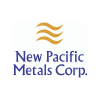by Kelly Ryan
As the world looks towards a green energy revolution, it is turning towards south-western South America, with its strong veins of critical minerals that run through many countries: Argentina, Peru, Brazil, Chile and Bolivia. A jurisdiction may stop at a country’s border, but the resource-rich mountains, valleys and plains, do not.
On the surface, news of those countries swirl with headlines about political upheaval and financial instability. But they tell only a fraction of the story. It is the heart of the continent that beats unflinchingly underground that tells the tale.
Let’s look at Bolivia in particular, which saw stability for nearly 20 years at the beginning of this century. In fact, Bolivia boasted an “economic miracle” in the 2000s and 2010s as millions of citizens were lifted out of poverty and into the middle class. Of course, there was no such miracle – it was a boom in the development of natural resources, mainly gas, which Bolivia could provide. Politicians and industry were happy to meet the increased need.
But gas production has fallen dramatically over the last decade, leaving Bolivia’s economy without an anchor. As a result, Bolivia has seen stressful times. Financial woes became personal earlier this year, as banks limited how many American dollars citizens could withdraw at a time, due to a shortage of the currency.
Now Bolivia is again turning to its rich natural resources to bolster its future.
The United States Geological Service estimates that Bolivia is home to 21-million tonnes of lithium – one of the most sought-after minerals needed for electric car batteries. That’s more lithium than any other country in the world possesses. This year, Bolivia has signed large deals with foreign investors to develop those lithium fields, signaling the country’s comfort in working with business partners.
It is a sign that no matter how much the country’s politicians decry big business and promote state-run policies, leaders know the country needs both currency and foreign industry expertise to move forward. Various leaders are seeking attention with a general election looming in 2025. But the reality is, it won’t matter who is head of state. Bolivia has worked smoothly with foreign investment, technology and technical skills under various leaders.
As mining giants have recognized, geology and geography can trump political circumstances.
Mark Bristow, President and CEO of Barrick Gold (TSX: ABX; NYSE: GOLD), a US$30 billion dollar company with projects in Pakistan, Chile, Argentina, and other less traditional parts of the world, has said, “If you want to focus on world class assets, which is our stated objective, and my obsession, asset quality always overrides jurisdiction.”
Bolivia has been home to many large mining operations over the last 17 years, including those run by Pan American Silver and Minera San Cristobal (whose San Cristobal mine is one of the largest producer of zinc, lead and silver in the world).
Add the massive new silver and gold discoveries by Canadian mining company New Pacific Metals (TSX: NUAG; NYSE:NEWP) and there is a plenty of reason for optimism for Bolivia. As with a house of cards, the fall can set the stage for a stronger rebuild.
New Pacific has three exciting projects in the country at various stages of development: Silver Sand, Carangas and Silverstrike. Each has exceptional promise for precious metals seekers. Silver Sand alone has been called one of the most significant finds of pure silver globally in the last decade. For anyone who knows geological history, that should come as no surprise, since Bolivia has been home to silver mining for the last 500 years, even financing the vast Spanish Empire in the 1500s.
A closer look at the three projects highlights the huge potential. Silver Sand is expected to produce 171 million ounces of silver over a 14 year mine life. At Carangas, 180 drill holes discovered a vast silver horizon (100 m x 800 m) overlying a broad gold zone. And early exploration at Silverstrike hit a 200m run of near-surface oxidized gold. The three projects reflect NUAG’s operating model: careful identification of a project, intelligent acquisition and well-planned drilling.
Big players are not afraid to support NUAG’s efforts in Bolivia. In a recent financing, Silvercorp Metals Inc. bought 2.54 million shares of the Vancouver-based company, and Pan American Silver purchased 5.08 million shares. These bold moves came at a time when nervous precious metals investors were running for the Andean hills, spooked by various headlines of turmoil. However, panicked conditions create ideal conditions for both new and current shareholders to acquire shares which are trading at a fraction of all-time highs.
Bolivia’s economic future depends less on which politician grabs the reins of power in the 2025 election, and more on the willingness of foreign investors to see the resource potential and wealth that goes with it. Bolivia has been called a “sleeping giant” in terms of its untapped resources, and New Pacific Metals has its boots on the ground, ready to help nudge that giant out of its slumber and to introduce investors to the resources waiting to be mined.
To read more information on New Pacific’s projects, please visit: www.newpacificmetals.com/welcome/

